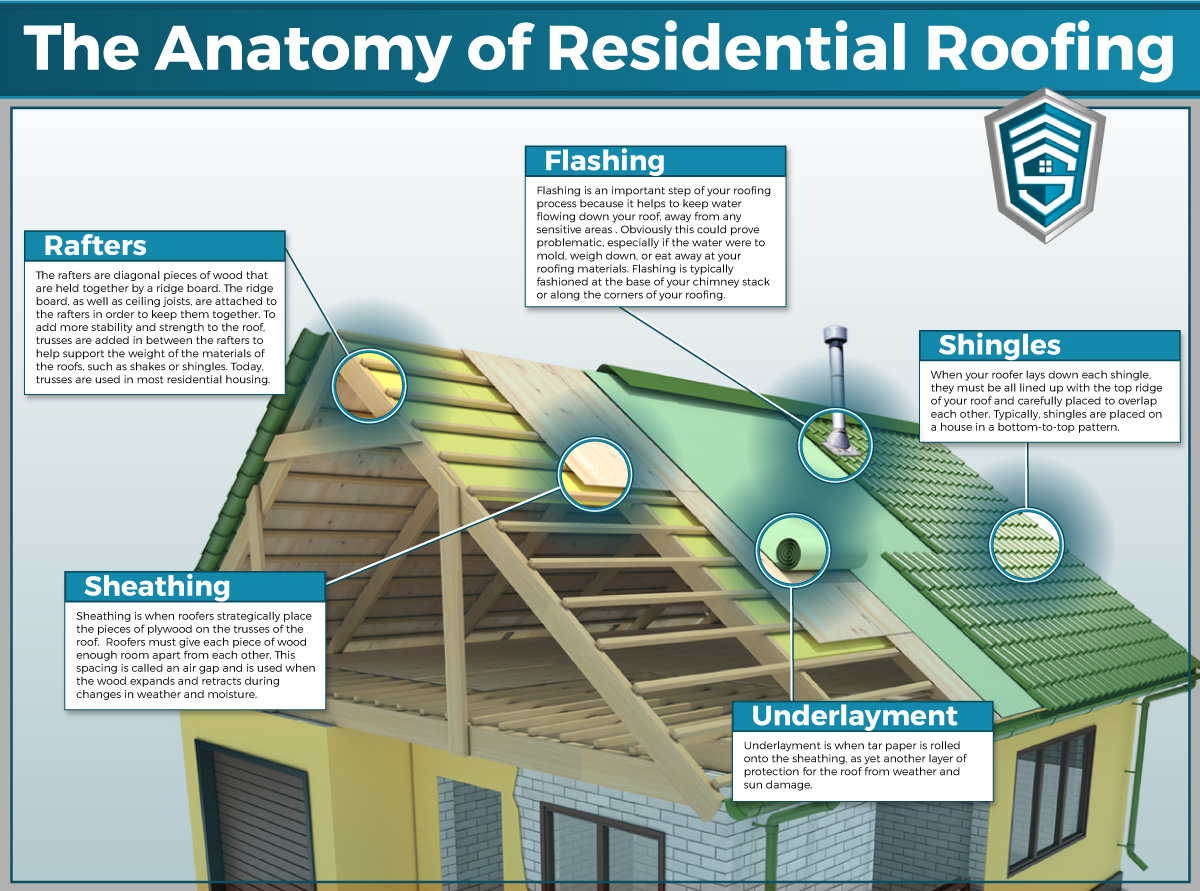The Relevance Of Roofing System Air Flow For Effective Installation Outcomes
The Relevance Of Roofing System Air Flow For Effective Installation Outcomes
Blog Article
Authored By-Kehoe Vogel
When you're dealing with a roof project, you might not assume much concerning roof air flow, but it's more crucial than you recognize. roof repair san antonio, tx skyroofingconstructiontx.com assists regulate temperature level and dampness in your attic, protecting against issues like mold and architectural damage. By comprehending exactly how to make and install a well balanced ventilation system, you can enhance power performance and lengthen the life-span of your roof covering products. So, what are the vital factors to take into consideration during installation that can make all the difference?
Relevance of Roofing System Air Flow
Roof covering ventilation plays a vital role in keeping the general health and wellness of your home. By enabling fresh air to distribute through your attic, it aids manage temperature level and moisture levels. recommended you read is important to avoid warmth buildup during warm months, which can cause raised energy costs as your air conditioning burns the midnight oil.
Additionally, appropriate ventilation significantly lowers the risk of moisture-related problems like mold and mildew and mold. If humidity degrees increase, your home's structural stability can be compromised, bring about costly repair work. You wouldn't intend to take care of deteriorating wood or distorted roofing products, right?
Furthermore, appropriate ventilation prolongs the life expectancy of your roof. When warm and wetness are kept in check, your roof can execute optimally, protecting against early damage. This implies less headaches and expenditures down the line.
Exactly How Roof Covering Ventilation Functions
Reliable roof ventilation counts on the all-natural movement of air to produce an equilibrium in between intake and exhaust. When you mount vents, you're essentially allowing fresh air to enter your attic while allowing warm, stale air to get away. This procedure helps regulate temperature level and moisture degrees, avoiding problems like mold growth and roof covering damage.
Intake vents, typically located at the eaves, reel in awesome air from outdoors. At the same time, exhaust vents, located near the ridge of the roof covering, allow hot air surge and departure. The distinction in temperature level creates an all-natural air flow, known as the pile impact. As cozy air surges, it creates a vacuum cleaner that draws in cooler air from the lower vents.
To optimize this system, you need to ensure that the consumption and exhaust vents are properly sized and placed. If the intake is restricted, you will not attain the preferred air flow.
Similarly, inadequate exhaust can catch warmth and dampness, causing prospective damage.
Secret Installment Considerations
When mounting roof covering ventilation, a number of essential considerations can make or damage your system's effectiveness. First, you require to examine your roof's style. The pitch, form, and materials all affect air flow and air flow option. See to it to pick vents that suit your roofing system kind and regional climate problems.
Next off, consider the placement of your vents. Preferably, you'll want a balanced system with intake and exhaust vents placed for optimum air movement. Place consumption vents short on the roof and exhaust vents near the height to motivate a natural flow of air. This configuration assists stop wetness accumulation and advertises power effectiveness.
Don't forget about insulation. Correct insulation in your attic stops warm from leaving and maintains your home comfortable. Guarantee that insulation doesn't block your vents, as this can hinder air flow.
Finally, think of maintenance. Select ventilation systems that are simple to accessibility for cleansing and inspection. Normal maintenance guarantees your system continues to work effectively in time.
Final thought
To conclude, roof covering ventilation is crucial for a successful installment. By guaranteeing correct air flow, you can prevent warm build-up and dampness problems that lead to costly damages. When you purposefully setting intake and exhaust vents, you enhance energy performance and prolong the life-span of your roof. Remember, a well-ventilated roof not just safeguards your investment but also enhances your indoor air top quality. So, prioritize air flow to ensure a resilient and economical roof for your home.
